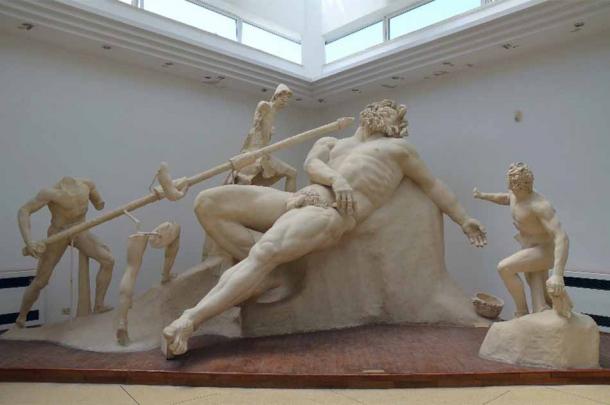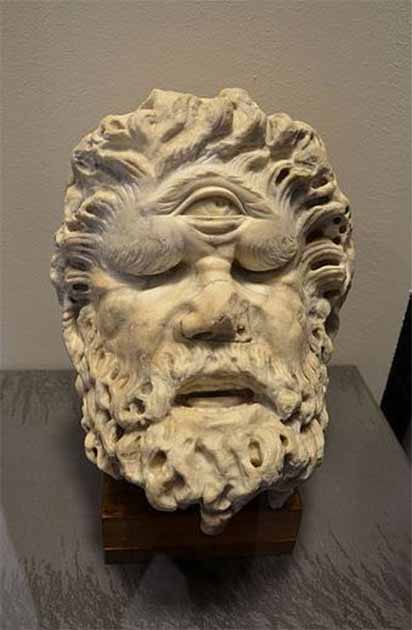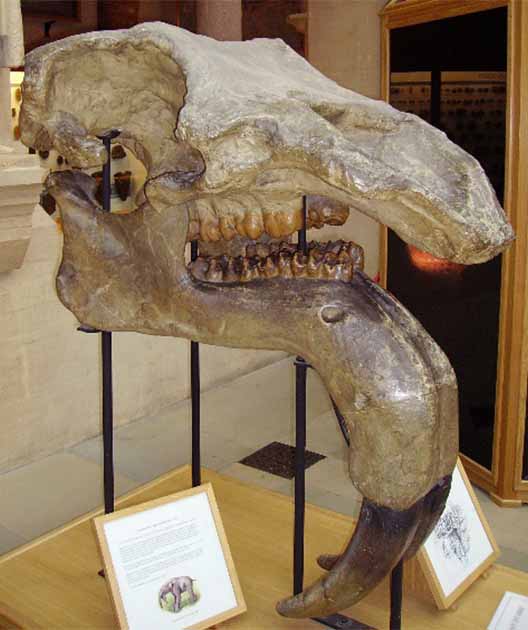Were Cyclopes Legends Inspired by Ancient Elephant Skulls?
Ancient Greek mythology is full of fantastic beasts and monsters. One of the most famous examples is the brutal one-eyed race of giants, the cyclopes. Several different cyclopes appeared in various myths. One group was instrumental in helping Zeus overcome the Titans, while another had a nasty habit of feasting on mortals. But where did the Greeks get their inspiration from? Were the cyclopes just a figment of their imaginations, or was something else at work?
What Were the Cyclopes?
In Greek mythology, there were three distinct groups of cyclopes, all appearing in different myths. The most well-known are the Homeric cyclopes that appear in the Odyssey. When we think of the cyclopes that are prevalent in pop culture today, it is the Homeric cyclopes we are thinking of.
These cyclopes were a group of one-eyed, savage giants who were man-eating shepherds. Odysseus and his men ended up on the cyclopes’ island looking for supplies during their long and eventful journey home. One of the cyclopes, Polyphemus (son of Poseidon), captured Odysseus and his men. He began eating Odysseus’s men one by one. Using his wits, Odysseus got the cyclops drunk and blinded him, before fleeing with his remaining men.

Statue depicting The Blinding of Polyphemus (Carole Raddato / CC BY SA 2.0 )
The second most famous group was the Hesiodic cyclopes. These fit the same physical description, but are quite different. In the Theogony, Hesiod described three cyclopes: Brontes, Steropes, and Arges. These were the children of Uranus and Gaia. They were also brothers to the Titans and the Hundred-Hander giants.
In the Theogony, these cyclopes were banished to Tartarus (Greek hell), but they were rescued by Zeus. They played a key role in the Greek succession myth by arming Zeus with his thunderbolts, which became his primary weapon throughout Greek mythology. They also crafted Hades’ helm of invisibility and Poseidon’s trident. Rather than savage monsters, these cyclops were subservient master craftsmen.

A first century AD head of a Cyclops, one of the sculptures adorning the Roman Colosseum (Steven Lek / CC BY SA 4.0 )
The third group was the cyclopean wall builders. The Greeks believed that the great walls of Mycenae, Tiryns, and Argos were all built by primordial cyclopes. Besides being master craftsmen, not much is known about these cyclopes. They were just used to explain something the Greeks struggled to explain otherwise – giant walls made of stone no man could lift.
Elephant Fossils and the Cyclopes
In the early 21st century, the remains of a Deinotherium giganteum were found in Crete for the first time. The Deinotherium giganteum was an ancient relative of the modern elephant. It was 15 feet (4.6 meters) tall, with tusks 4.5 feet (1.3 meters) long.
Its skull showed it to be much more primitive and bulkier than its modern counterpart. Most importantly, it also had an extremely long nasal opening in the center of its skull. To paleontologists today, or anyone who has seen an elephant, the large hole points to a big trunk.
But what about the scientifically uneducated? A giant skull with a large hole in the center? Found close to large bones? That could sound a lot like a cyclops skull.
Adrienne Mayor, a historian of ancient science and a classical folklorist, believes that’s what the Greeks thought when they first found a Deinotherium giganteum skull. She has argued that Greeks and Romans had a long history of using fossil evidence to support existing myths and even create new ones.
The idea that mythology and religion have been used throughout history to explain the unknown is nothing new. As a species, humans crave explanations and answers. The Greeks were farmers and would come across fossils from time to time. When a person with no understanding of evolution came across a giant bone that they couldn’t otherwise explain, it makes sense that they would reconstruct them in their minds as giant monsters.
In her book The First Fossil Hunters: Paleontology in Greek and Roman Times , Mayor took this idea and ran with it. She pointed out that the areas where many of the myths took place are home to lots of fossil beds. Furthermore, according to Mayor, many myths involve monsters coming out from beneath the ground after storms. It is not uncommon for a bad storm to erode soil and reveal the underlying fossils.

Deinotherium skull from Oxford University Museum of Natural History (Ballista / CC BY SA 3.0 )
Debunking the Pygmy Fossil Claim
Mayor wasn’t the first person to connect elephant fossils with the cyclops myth, however. A century before, the Austrian paleontologist Othenio Abel first proposed the idea. He suggested the cyclops myth had been birthed with the Greek discovery of fossilized pygmy elephant skulls.
It all seemed to line up. Pygmy elephant skulls have eye sockets that are very small when compared to the large nasal cavity left by the trunk. The fossils are also usually found with other fossilized bones. To the Greeks, this could have appeared to be evidence of the cyclops’ savage diet.
Abel also claimed that the Greek writer Empedocles had seen pygmy elephant remains in caves in Sicily. There was only one problem; according to Mayor, Abel was mistaken. Empedocles made no such claim and never saw pygmy elephant fossils. So Abel was on the right track, but was perhaps wrong on the specific type of elephant fossil that inspired the myth.

Elephant skull at Serengeti National Park. ( CC BY-SA 2.0 )
Conclusion
We’ll never know whether Mayor and Abel are right or not. Without a time machine, there is no scientific way to confirm how the Greeks came up with the myth. The theory does make sense though. How else would the ancient Greeks explain their seemingly strange fossil discoveries other than coming up with tall tales to explain them?
The Greeks weren’t alone either. Other civilizations have done the same. Take the dragon for example. The dragon appears in the mythology of cultures all over the world. What else can be found all over the world? Dinosaur fossils. It is likely no coincidence that many depictions of dragons resemble our modern understanding of what a dinosaur looked like.
Even today, some creationists still point at fossil evidence and use it to argue that fossils are proof of creatures like the Leviathan, which appear in the Bible, rather than evidence of animals millions of years old. So in the end, it isn’t that surprising that the Greeks might have seen an old elephant skull and confused it with that of a cyclops.
Top image: The cyclopes were one-eyed mythological giants of ancient Greece. But did the myth originate from elephant skulls like this? Source: Left; John Cummings, CC BY-SA 3.0 , Right; bigjom/ Adobe Stock
By Robbie Mitchell